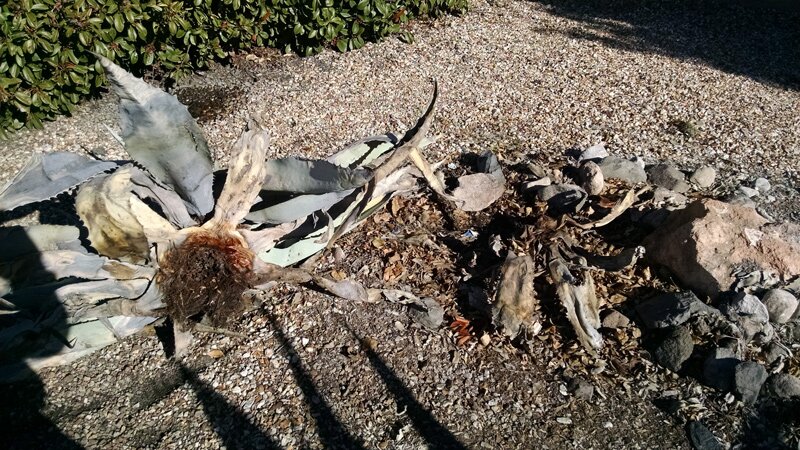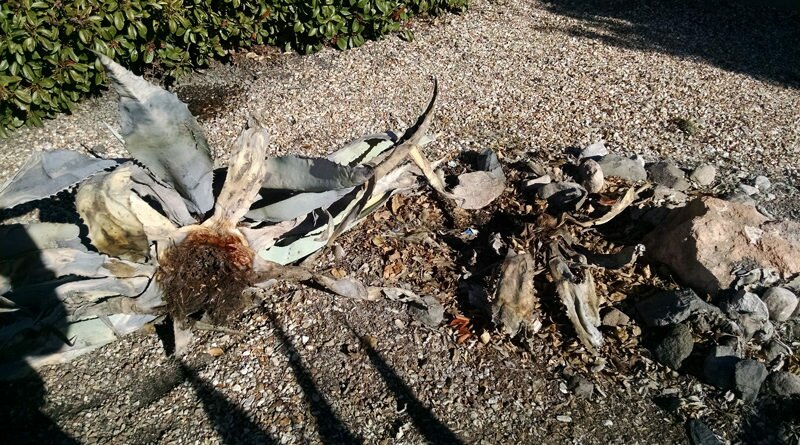What’s Bugging Your Plants? Heat, Bugs & More

Summer heat can really suck the life out of plants. The lack of rain so far this year hasn’t helped. If you notice your plants looking a little tired, the obvious cure is to give them some extra water. But there’s more you should know and do to keep your plants healthy in the heat.
Even the most drought-tolerant plants can succumb to our searing summers. Cacti and agaves may display some yellowing, a result of stress and sunburn. Shade cloth can offer some temporary protection. If practical, planting a larger shrub west of a cactus can provide afternoon shade.
Some plants must also defend against invasive insects. In recent years, we’ve observed caterpillars damaging yellow bells (tecoma stans), orange bells/orange jubilee and bougainvillea. This small caterpillar (antigastra catalaunalis) likes to suck these plants’ leaves. An infected plant may appear to need water, but closer inspection of the leaves will reveal lots of tiny black pellets: caterpillar poop. The critters themselves can be found rolled into tiny balls for protection.
Spraying a plant with a product containing the bacterium bacillus thurengensis can be an effective treatment. Most plants will recover after spraying. Some aggressive pruning of the infected areas may be required.
The agave snout weevil is another pest we see frequently. They routinely attack and kill mature desert spoon, agave, and yucca. Unfortunately, an infestation may not be apparent until the damage is too severe and the plant may no longer be anchored by its roots. If you can easily push it over, remove it.
The best treatment strategy is prevention. Consider drenching the soil around susceptible plants each spring with a product containing the insecticide imidacloprid.


